Using Mirrors to Add Dimension to Your Garden
Have you ever stepped into a garden that felt like a magical oasis, where every corner seemed to whisper secrets of nature's beauty? Well, if you want to create that enchanting atmosphere, using mirrors in your garden might just be the secret ingredient you need! Mirrors can do wonders in transforming your outdoor space by creating an illusion of depth and reflecting the vibrant colors of your plants and flowers. Imagine walking through your garden and being greeted by a reflection of your favorite blooms, making the space feel larger and more inviting. It's like having a little piece of nature's artwork framed and showcased right in your own backyard!
Incorporating mirrors into your garden design isn’t just about aesthetics; it’s about enhancing the overall experience of being outdoors. When strategically placed, mirrors can catch sunlight and bounce it around, illuminating otherwise shaded areas. This not only highlights the beauty of your garden but also creates a warm and inviting ambiance. Think of mirrors as your garden’s best friend, helping to amplify the beauty already present while adding a touch of intrigue. So, are you ready to dive into the world of reflective gardening? Let’s explore how mirrors can elevate your outdoor space!
First off, let's talk about the benefits of using mirrors in gardens. They can transform a simple garden into a stunning visual masterpiece. By reflecting the greenery and flowers, mirrors can make your garden appear more expansive, almost like stepping into a secret garden that goes on forever. Not to mention, mirrors can serve as a focal point, drawing the eye and inviting exploration. Imagine a beautifully framed mirror nestled among your flowers, enticing visitors to take a closer look. It’s not just decoration; it’s an invitation to experience the beauty of your garden in a whole new way!
But before you rush out to buy the first mirror you see, it’s essential to consider how to choose the right mirrors for your garden. Size, shape, and material all play crucial roles in ensuring that your mirrors not only look good but also withstand the elements. You wouldn’t want a delicate mirror shattering in a storm, right? So, let’s get into the nitty-gritty of selecting mirrors that complement your garden's design and environment.
Another critical aspect is the placement of mirrors. Simply hanging a mirror on a wall won’t do the trick. You need to think strategically about where to position your mirrors to maximize their impact. For instance, placing a mirror opposite a flowering shrub can create a stunning reflection that doubles the visual interest. It’s all about playing with angles and light to achieve that ‘wow’ factor. And remember, mirrors can also help you create cozy nooks within your garden, making it feel more intimate and inviting.
So, whether you’re a seasoned gardener or just starting out, incorporating mirrors into your garden design can be a game-changer. They not only enhance the visual appeal of your space but also create a sense of wonder and depth. Get ready to turn your garden into an enchanting retreat that reflects your personality and style!
- Can any type of mirror be used in a garden? - Not all mirrors are suitable for outdoor use. Look for weather-resistant options designed for outdoor conditions.
- How do I prevent my garden mirrors from getting damaged? - Regular maintenance and protective measures can help ensure the longevity of your mirrors.
- What’s the best way to clean outdoor mirrors? - Use gentle cleaning solutions and soft cloths to avoid scratches and damage.
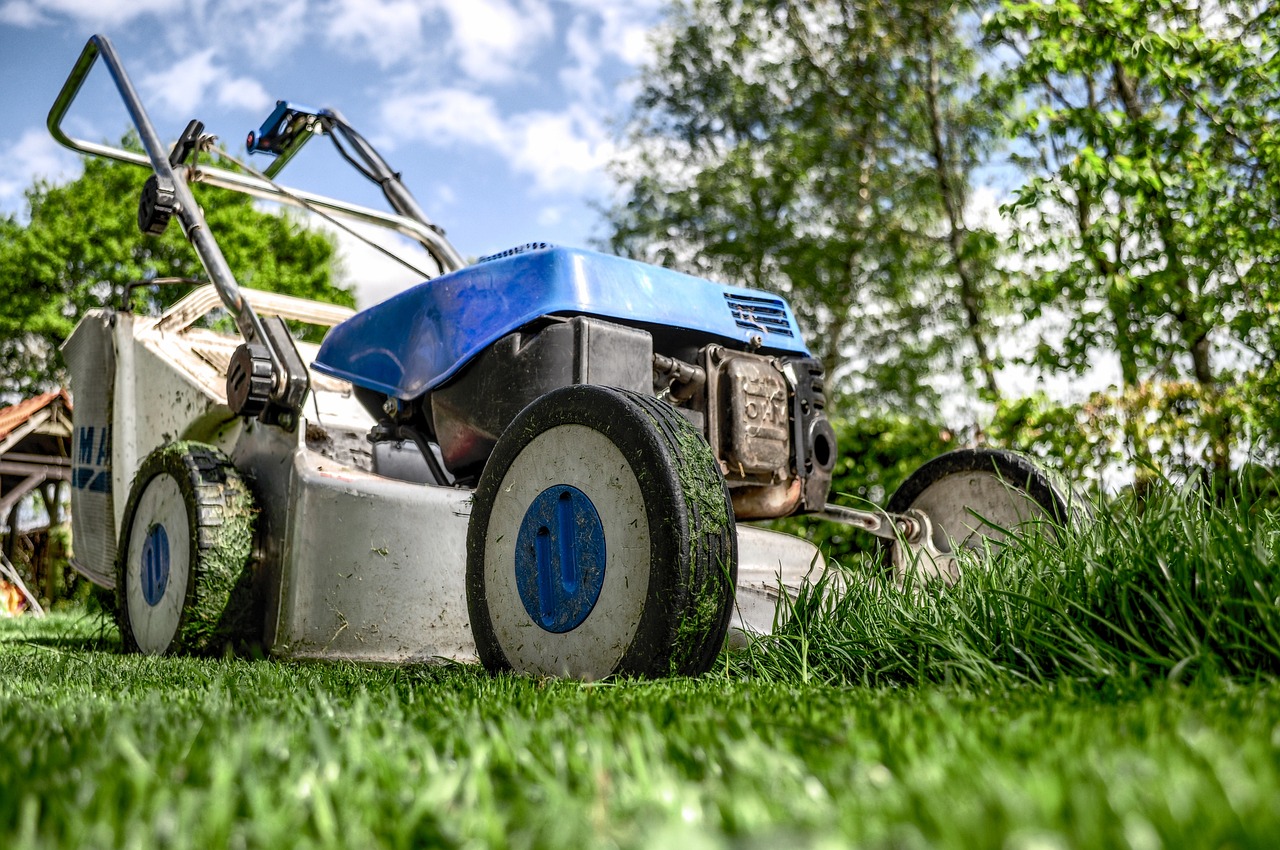
The Benefits of Using Mirrors in Gardens
Using mirrors in your garden is like adding a sprinkle of magic to your outdoor space. Imagine stepping into your garden and feeling an immediate sense of expansiveness and light. Mirrors can transform a mundane garden into a stunning visual masterpiece. They create an illusion of depth, making your garden appear larger than it actually is. This is particularly beneficial for smaller gardens, where every bit of space counts. By reflecting the beauty of your plants and flowers, mirrors can enhance the overall aesthetic, turning your garden into a breathtaking sanctuary.
Have you ever noticed how light plays a vital role in our perception of space? Mirrors capture and reflect natural light, brightening up even the shadiest corners of your garden. This effect not only makes your garden feel more inviting but also highlights the vibrant colors of your plants. The interplay of light and reflection can create a dynamic atmosphere, where the scenery changes throughout the day as the sun moves across the sky. It's like having a live painting that evolves with time!
Moreover, mirrors can serve as a focal point in your garden design. When strategically placed, they can draw the eye to specific areas, creating a sense of intrigue. For instance, you might place a mirror behind a flowering bush to reflect its blooms, effectively doubling the impact of your floral display. This technique can also guide visitors through your garden, encouraging them to explore and discover hidden gems. The surprise of encountering a beautiful reflection can evoke feelings of joy and wonder.
In addition to their aesthetic benefits, mirrors can also serve practical purposes. For example, they can be used to create a sense of privacy in your garden. A well-placed mirror can reflect a view that you want to enhance while blocking out an unsightly one. This clever use of mirrors allows you to curate your garden experience, making it feel more personal and intimate.
To sum it up, the benefits of using mirrors in gardens are multifaceted. They can:
- Create an illusion of space and depth
- Enhance natural light
- Serve as focal points
- Provide practical solutions for privacy and aesthetics

Choosing the Right Mirrors for Your Garden
When it comes to enhancing your garden with mirrors, choosing the right ones can be a game changer. Think of mirrors as the secret ingredient that can transform your outdoor space from ordinary to extraordinary. But how do you select the perfect mirrors that not only reflect beauty but also harmonize with your garden's design? Here are some key factors to consider.
First and foremost, size matters. You want mirrors that fit well within the scale of your garden. A large, expansive garden can handle a grand, oversized mirror, while a smaller garden might benefit from a series of smaller mirrors strategically placed to create an illusion of depth. Imagine walking into a cozy garden nook that feels larger because of a cleverly positioned mirror that reflects the surrounding greenery. It's like magic!
Next, let's talk about shape. Mirrors come in various shapes—round, square, rectangular, or even abstract designs. The shape of the mirror should complement the overall aesthetic of your garden. For instance, if you have a rustic garden filled with organic shapes and flowers, consider opting for a round or organically shaped mirror that mimics those natural forms. On the other hand, sleek, geometric mirrors can add a modern touch to a contemporary garden design.
Another crucial aspect is the material of the mirror. Not all mirrors are created equal, especially when it comes to outdoor use. You need mirrors that can withstand the elements. Look for mirrors that are specifically designed for outdoor use, often made with weather-resistant materials. Stainless steel or specially treated glass mirrors are excellent choices, as they are durable and less likely to tarnish or break under harsh conditions.
Additionally, consider the frame of the mirror. A well-chosen frame can either enhance the beauty of the mirror or distract from it. For example, a vintage wooden frame can add a charming touch to a cottage garden, while a sleek metal frame might be perfect for a modern landscape. Think about how the frame interacts with the plants and flowers around it. Does it blend in or stand out? The goal is to create a harmonious balance.
Finally, don't forget about the style of your garden. Mirrors should reflect not only the physical surroundings but also the overall vibe you want to convey. If your garden is a serene retreat, opt for mirrors that create a calming effect through soft shapes and muted colors. Conversely, if your garden is vibrant and lively, choose mirrors that are bold and eye-catching. Remember, the mirror is a reflection of your personal style as much as it is a reflection of your garden.
In summary, selecting the right mirrors for your garden involves thoughtful consideration of size, shape, material, frame, and style. By keeping these elements in mind, you can choose mirrors that not only enhance the aesthetic appeal of your garden but also create a magical illusion of space and light.
- What type of mirror is best for outdoor use? Look for weather-resistant mirrors made of stainless steel or specially treated glass.
- How do I choose the right size mirror for my garden? Consider the scale of your garden; larger spaces can accommodate bigger mirrors, while smaller gardens may benefit from smaller, strategically placed mirrors.
- Can I use regular mirrors in my garden? It's best to avoid regular mirrors as they may not withstand outdoor conditions and could quickly become damaged.
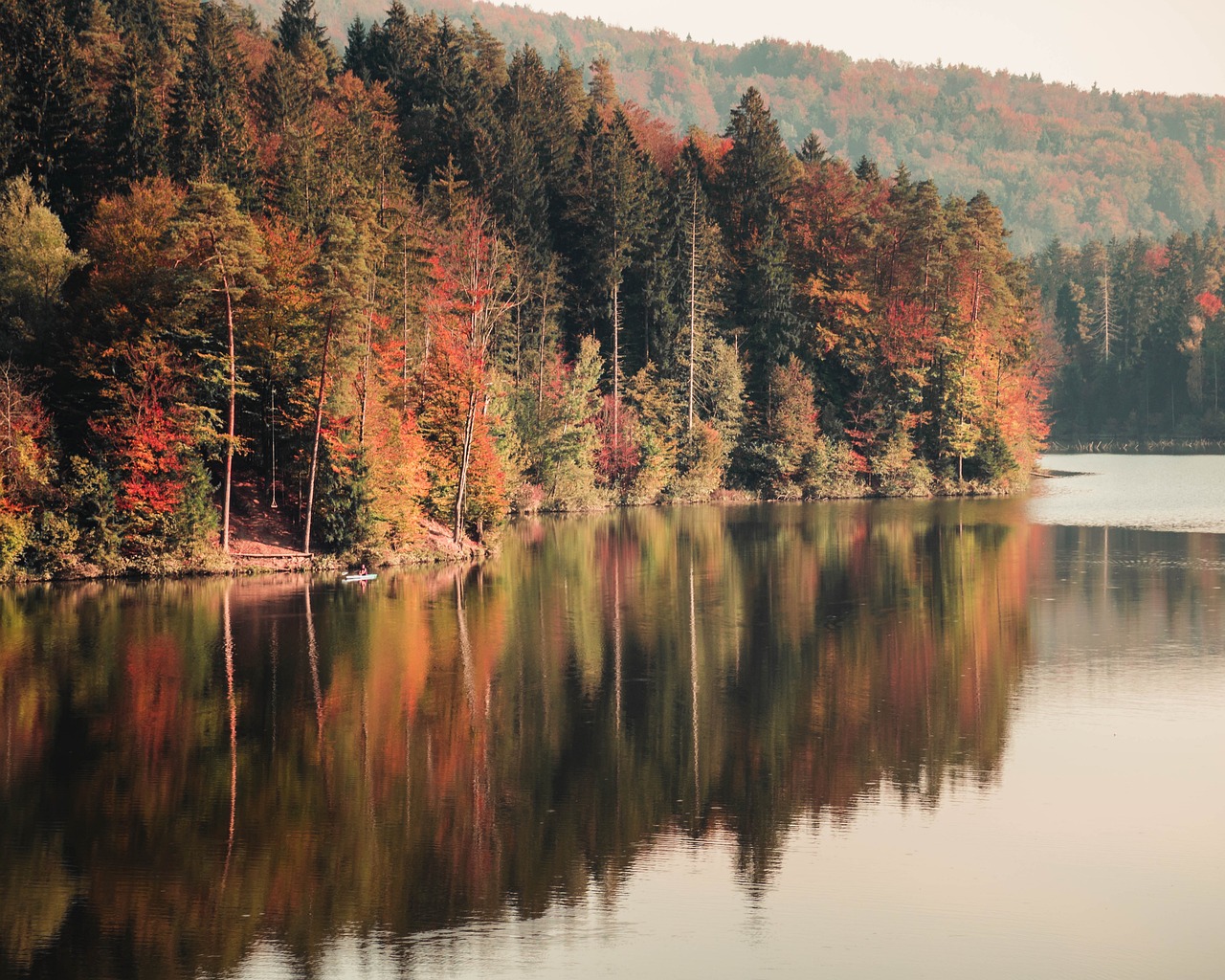
Types of Mirrors Suitable for Outdoor Use
When it comes to enhancing your garden's charm, choosing the right type of mirror is crucial. Not all mirrors can withstand the outdoor elements, so it's important to select those that are specifically designed for outdoor use. Generally, outdoor mirrors are made from materials that resist moisture, UV rays, and temperature fluctuations. Here are some types of mirrors that are well-suited for your garden:
- Glass Mirrors: Traditional glass mirrors can be stunning in a garden, but they must be specially treated to be weather-resistant. Look for tempered glass, which is stronger and less likely to shatter.
- Acrylic Mirrors: These are lightweight and shatterproof, making them an excellent choice for families with children or pets. Acrylic mirrors can also withstand various weather conditions, making them ideal for outdoor use.
- Stainless Steel Mirrors: For a modern touch, stainless steel mirrors offer a sleek finish and are incredibly durable. They resist rust and corrosion, ensuring they maintain their beauty for years.
- Polycarbonate Mirrors: Similar to acrylic, polycarbonate mirrors are incredibly tough and can handle extreme weather. They offer excellent clarity and are a safe option for gardens.
When selecting a mirror, consider the environment of your garden. For example, if your garden is in a humid area, opt for materials that are resistant to moisture. On the other hand, if your garden receives a lot of sunlight, choose mirrors that can resist UV damage. Additionally, consider the mirror's finish. A reflective surface can add sparkle to your garden, while a matte finish can create a more subtle effect.
In summary, choosing the right type of mirror for outdoor use is essential for both aesthetics and durability. By selecting mirrors made of materials like acrylic, stainless steel, or specially treated glass, you can enhance your garden's beauty while ensuring that your investment lasts through the seasons. Remember, the right mirror can not only reflect the beauty of your plants and flowers but can also create an illusion of space and light, making your garden feel larger and more inviting.
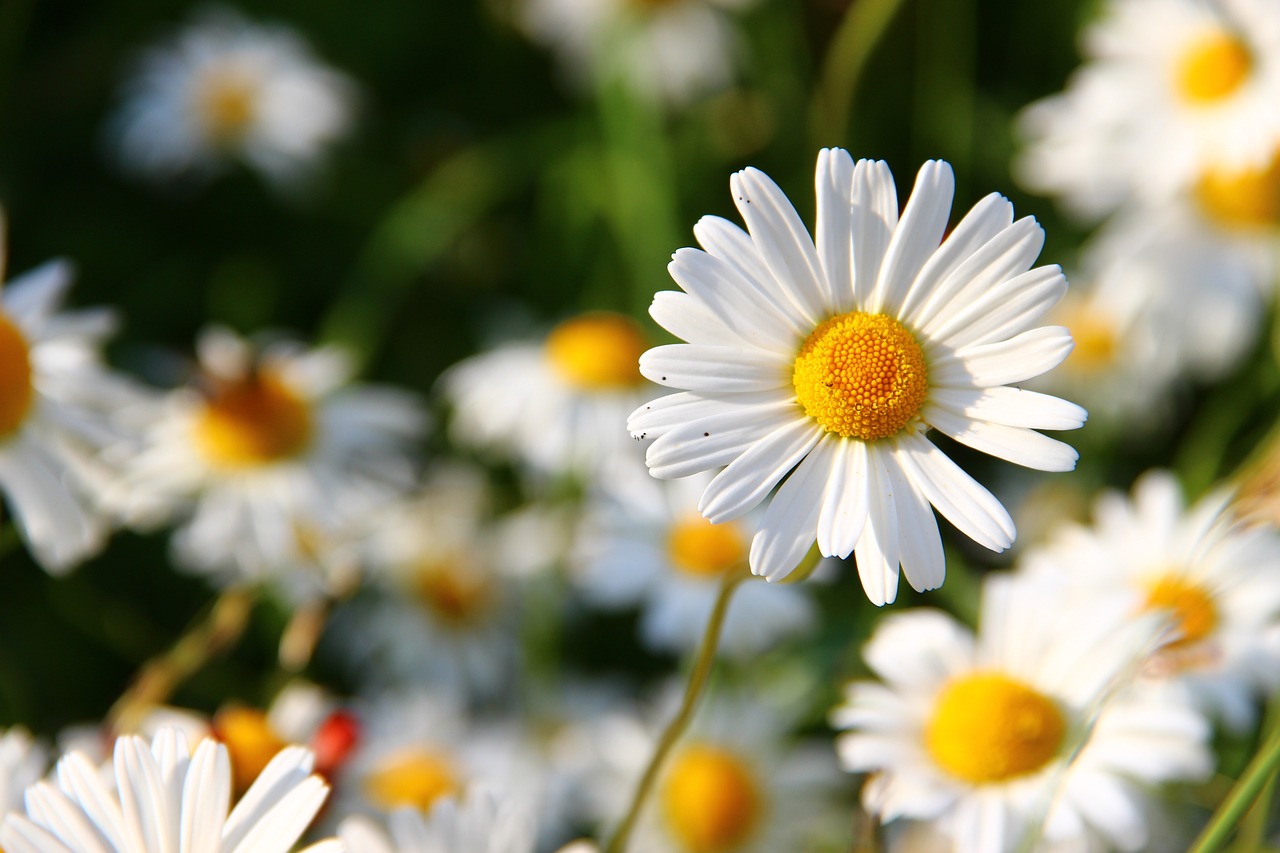
Framed vs. Frameless Mirrors
When it comes to choosing mirrors for your garden, one of the most important decisions you'll face is whether to go with framed or frameless options. Each type has its own unique advantages and challenges, making it essential to consider how they fit into your overall garden aesthetic and functional needs.
Framed mirrors offer a classic look that can add a touch of elegance to your outdoor space. The frame can be made from various materials such as wood, metal, or even recycled materials, allowing you to choose a style that complements the rest of your garden décor. For instance, a rustic wooden frame can enhance a cottage garden, while sleek metal framing might suit a modern landscape. However, one downside to framed mirrors is that they can sometimes be more susceptible to damage from the elements, especially if the frame material isn't weather-resistant.
On the other hand, frameless mirrors present a more contemporary vibe and can create the illusion of a larger space without the visual interruption of a frame. This makes them ideal for smaller gardens where maximizing space is a priority. Additionally, frameless mirrors are typically easier to clean and maintain since there are no edges or crevices for dirt and grime to accumulate. However, they may lack the decorative flair that a framed mirror can provide, so it’s important to consider your garden’s overall design when making your choice.
| Feature | Framed Mirrors | Frameless Mirrors |
|---|---|---|
| Aesthetic Appeal | Classic and decorative | Modern and sleek |
| Durability | Can be less durable if not weatherproof | Generally more resilient |
| Maintenance | May require more upkeep | Easy to clean |
| Space Illusion | Can create depth with framing | Maximizes visual space |
Ultimately, the choice between framed and frameless mirrors depends on your personal preference and the specific ambiance you want to create in your garden. If you’re aiming for a cozy, inviting atmosphere, framed mirrors might be your best bet. However, if you want to keep things light and airy, frameless mirrors could be the way to go. Whichever option you choose, mirrors can truly transform your garden into a stunning visual retreat.
- Do mirrors in the garden attract birds? While mirrors can reflect light and create beautiful visuals, they may also confuse birds. It's best to position them thoughtfully to minimize this issue.
- How do I secure mirrors outdoors? Ensure that mirrors are securely anchored to withstand wind and other elements. You can use brackets or adhesive specifically designed for outdoor use.
- Can I use regular mirrors in my garden? Regular mirrors are not recommended for outdoor use as they may not withstand weather conditions. Opt for mirrors specifically designed for outdoor environments.

Decorative vs. Functional Mirrors
When it comes to enhancing your garden with mirrors, you might find yourself at a crossroads between choosing decorative and functional mirrors. Each type serves its own unique purpose and can significantly influence the overall vibe of your outdoor space. Decorative mirrors are primarily designed to enhance the visual appeal of your garden. They come in various shapes, sizes, and styles, allowing you to express your personal taste while adding a touch of elegance. Imagine a beautifully framed mirror nestled among your blooming flowers, reflecting their vibrant colors and creating a stunning focal point. This can turn a simple garden into an enchanting retreat.
On the other hand, functional mirrors serve practical purposes. They can be used to reflect light into darker areas of your garden, making your space feel more open and inviting. For instance, a strategically placed mirror can bounce sunlight into shaded spots, promoting plant growth and making your garden more lively. Additionally, functional mirrors can create a sense of depth, making your garden appear larger than it actually is. They can also be used for practical reasons, such as checking your appearance before heading back indoors after a long day of gardening.
So, how do you find the perfect balance between decorative and functional mirrors? Here are a few tips to consider:
- Assess Your Needs: Determine whether you want a mirror primarily for aesthetics, functionality, or a combination of both.
- Consider Your Garden's Theme: Choose mirrors that complement the overall design and feel of your garden. A rustic garden may benefit from a vintage-style mirror, while a modern garden might call for sleek, frameless designs.
- Placement Matters: Think about where you want to place your mirrors. A decorative mirror can be a stunning centerpiece, while a functional mirror should be positioned to maximize light reflection.
Ultimately, the choice between decorative and functional mirrors boils down to your personal style and the specific needs of your garden. By thoughtfully incorporating both types, you can create a harmonious environment that is both beautiful and practical. Whether you opt for an ornate, decorative piece or a sleek, functional mirror, the key is to ensure that it enhances the overall experience of your garden.
Q: Can I use any type of mirror in my garden?
A: Not all mirrors are suitable for outdoor use. It's essential to select mirrors specifically designed for outdoor conditions to ensure durability and longevity.
Q: How can I protect my garden mirrors from the weather?
A: To protect your mirrors, consider using weather-resistant frames, applying protective coatings, and placing them in sheltered areas when possible.
Q: Do decorative mirrors require more maintenance than functional mirrors?
A: Maintenance needs can vary based on the materials used. Generally, both types will require regular cleaning, but decorative mirrors may need more care due to intricate designs.
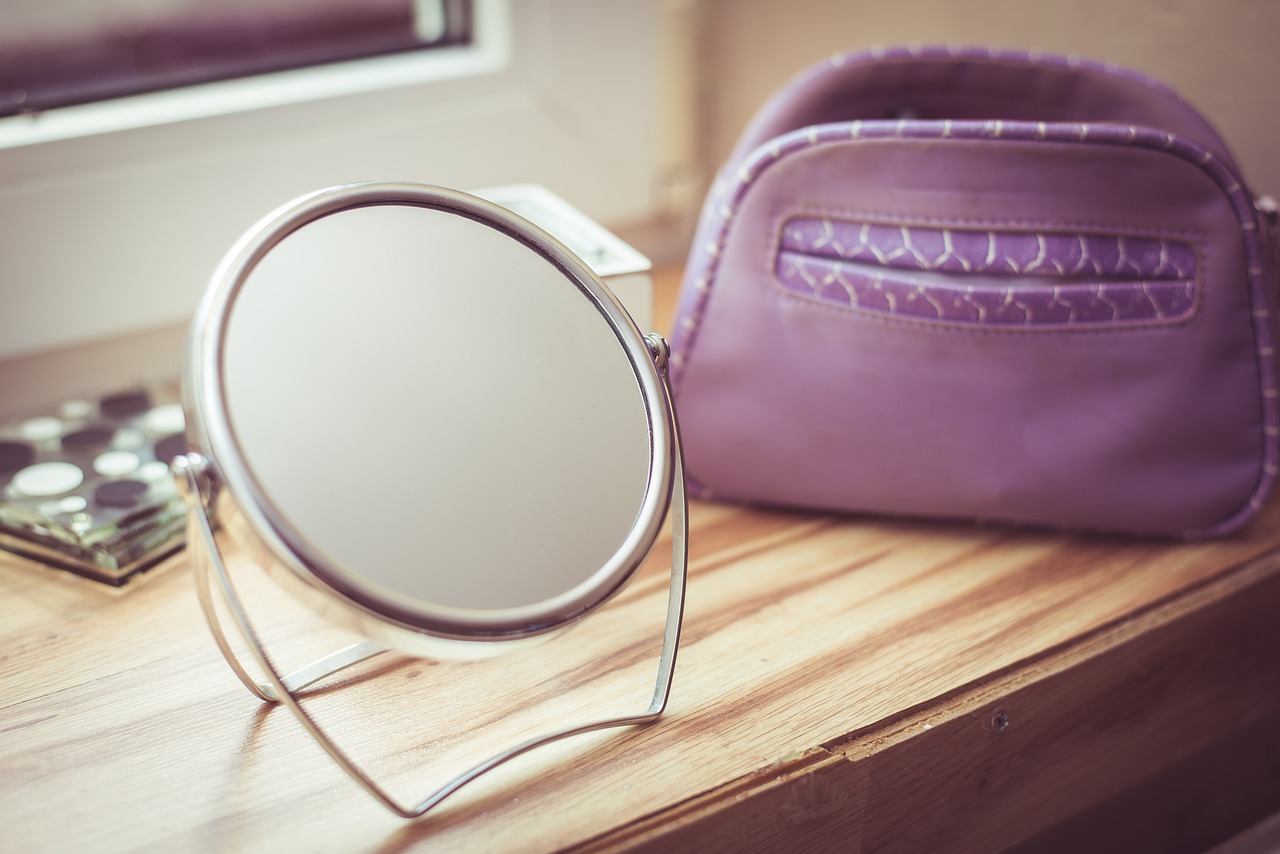
Placement Strategies for Maximum Impact
When it comes to using mirrors in your garden, placement is everything. Imagine walking into your outdoor space and feeling an immediate sense of openness and light. This is the magic that strategically placed mirrors can create. But how do you achieve that perfect balance? Let’s dive into some thoughtful placement strategies that can truly maximize the impact of your mirrors.
First off, consider the surroundings. Mirrors can reflect not only the beauty of your plants and flowers but also the natural light that filters through your garden. Placing a mirror opposite a window or a bright area can enhance this effect, creating a stunning visual that brightens even the shadiest corners. Think of it as a way to invite sunlight into darker areas, transforming your garden into a radiant oasis.
Next, think about angles. Positioning mirrors at an angle can create intriguing reflections and depth. For example, if you have a pathway, placing a mirror at the end can give the illusion of a longer path, enticing visitors to explore further. It's like adding a magical doorway that beckons them to step inside your lush paradise.
Another effective strategy is to use mirrors to frame focal points. If you have a beautiful sculpture, a vibrant flower bed, or a stunning tree, placing a mirror nearby can enhance its beauty by reflecting it back. This not only draws attention to your favorite features but also adds layers to your garden design. It’s a bit like putting a spotlight on your most cherished elements, making them shine even brighter.
Additionally, consider the height and size of your mirrors. Tall mirrors can make a space feel grander, while smaller mirrors can be used to create cozy nooks. If you’re working with a smaller garden, a large mirror can create the illusion of more space, making it feel open and airy. Conversely, a collection of smaller mirrors can add a whimsical touch, inviting curiosity as visitors wander through your garden.
Finally, don't overlook the importance of seasonality. As the seasons change, so does the light in your garden. Mirrors can be repositioned to take advantage of different light angles throughout the year. For instance, in the spring and summer, you may want to reflect the bright, vibrant colors of blooming flowers, whereas in the fall, you might focus on the warm tones of changing leaves. This dynamic approach keeps your garden feeling fresh and engaging all year round.
In summary, the right placement of mirrors can elevate your garden from ordinary to extraordinary. By reflecting light, enhancing focal points, and considering the seasonal changes, you can create a space that feels larger, brighter, and more inviting. So, go ahead and experiment with different placements until you find the perfect arrangement that resonates with your garden's unique personality!
- What type of mirrors are best for outdoor use? Look for mirrors specifically designed for outdoor conditions, typically made from weather-resistant materials.
- How often should I clean my garden mirrors? It’s best to clean them at least once a month, or more often if they are exposed to dust and dirt.
- Can mirrors attract unwanted attention? Yes, mirrors can reflect areas outside your garden, so be mindful of what they reflect to avoid drawing unwanted attention.
- How can I protect my mirrors from extreme weather? Use protective coatings or covers, especially during harsh weather conditions, to prolong their lifespan.

Maintenance Tips for Garden Mirrors
Maintaining your garden mirrors is essential to ensure they continue to enhance your outdoor space. Just like any other element in your garden, mirrors require care to keep them looking pristine. Over time, dirt, grime, and weather conditions can take a toll on their clarity and appearance. To help you keep your mirrors in top shape, here are some practical tips that you can incorporate into your garden maintenance routine.
First and foremost, regular cleaning is crucial. Depending on your local environment, you may need to clean your mirrors more frequently. If you live in an area with a lot of dust or pollen, consider wiping them down every couple of weeks. For a basic cleaning solution, mix equal parts of water and white vinegar in a spray bottle. This natural solution is effective and won’t harm your plants or the environment. Simply spray the mixture onto the mirror and wipe with a soft cloth or paper towel. Avoid using abrasive materials, as they can scratch the surface and diminish the reflective quality of the glass.
Another important aspect of maintenance is protecting your mirrors from harsh weather conditions. If you live in an area prone to extreme temperatures, heavy rain, or strong winds, it might be wise to take extra precautions. Consider covering your mirrors with a protective tarp during storms or extreme cold spells. This will help prevent moisture from accumulating and causing damage. Additionally, placing your mirrors at an angle rather than flat against a wall can help water run off more easily and reduce the risk of mold or mildew building up.
Furthermore, think about the positioning of your mirrors. While you want them to reflect beauty and light, you also want to ensure they’re not at risk of being knocked over or damaged by garden activities. If you have kids playing in the yard or pets running around, consider securing them in place with brackets or placing them in areas where they’re less likely to be disturbed.
Lastly, it’s a good idea to periodically check the integrity of the mirrors themselves. Look for signs of wear and tear, such as cracks or peeling, which could compromise their function. If you notice any damage, it might be time to replace them or consider a repair. Keeping an eye on these details can save you from larger issues down the road.
Q: How often should I clean my garden mirrors?
A: It's best to clean your mirrors every couple of weeks, especially in dusty or pollen-heavy environments.
Q: Can I use regular glass cleaner on outdoor mirrors?
A: While you can use glass cleaner, it’s recommended to use a mixture of water and vinegar for a more eco-friendly option that won't harm your garden.
Q: How do I protect my mirrors during winter?
A: Cover your mirrors with a tarp or bring them indoors if possible to protect them from freezing temperatures and moisture.
Q: What should I do if my mirror gets cracked?
A: If your mirror is cracked, assess the damage. If it's minor, you might be able to repair it; otherwise, consider replacing it to ensure safety and aesthetics.
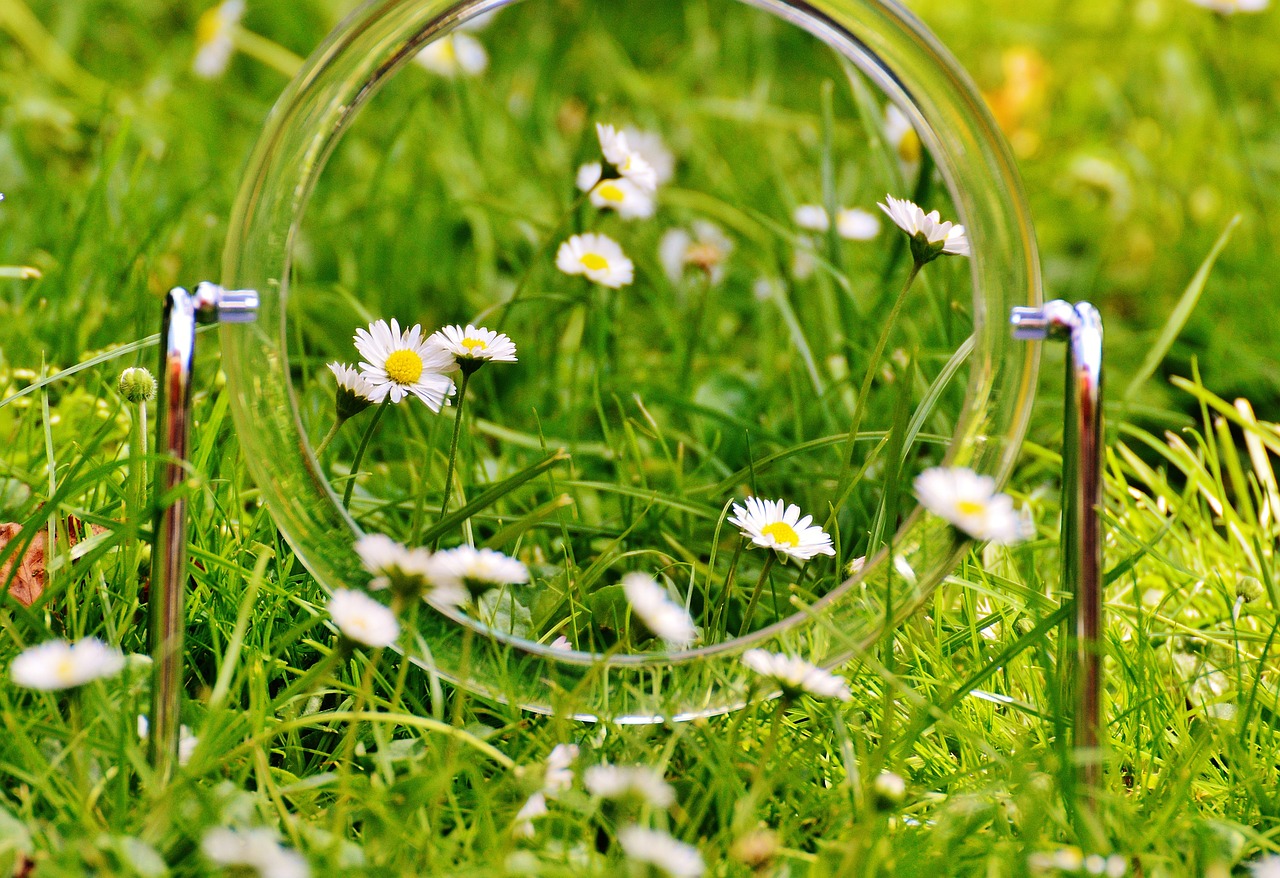
Cleaning Techniques for Outdoor Mirrors
Keeping your outdoor mirrors sparkling clean is essential for maintaining their beauty and functionality. Over time, mirrors can accumulate dirt, dust, and grime due to exposure to the elements. But don't worry! With the right cleaning techniques, you can easily restore their shine and clarity. First and foremost, it's important to choose the right time for cleaning; early morning or late afternoon is ideal when the sun isn't too harsh. This prevents streaks from forming as the cleaning solution dries too quickly.
Start by gathering your materials. You'll need a soft microfiber cloth, a gentle glass cleaner (or a DIY solution made from equal parts water and vinegar), and a squeegee for those larger mirrors. Avoid using abrasive materials, as they can scratch the surface of the mirror. Once you've got your supplies, it's time to get to work!
Begin by gently wiping the mirror's surface with the microfiber cloth to remove any loose dirt or dust. This step is crucial because it prevents scratching during the wet cleaning process. Next, spray your glass cleaner or vinegar solution onto the mirror. If you're using a commercial cleaner, make sure it's suitable for outdoor use. Then, using the microfiber cloth, wipe the mirror in a circular motion, starting from the top and working your way down. This technique helps to prevent drips and ensures even coverage.
For larger mirrors, a squeegee can be a game-changer. After applying the cleaner, use the squeegee to remove excess liquid, starting from the top and pulling down in a straight line. Wipe the squeegee blade with a clean cloth after each pass to avoid redistributing dirt. This method not only gives a streak-free finish but also saves time!
Lastly, remember to check the mirror's frame and surrounding area. Dust and debris can accumulate there as well. A quick wipe down will enhance the overall appearance of your garden mirror. Regular cleaning, ideally every few weeks, will keep your mirrors looking fresh and inviting, allowing them to reflect the beauty of your garden in all its glory.
- How often should I clean my outdoor mirrors? It's best to clean them every few weeks, especially after storms or windy days when debris is more likely to accumulate.
- Can I use regular household cleaners on my outdoor mirrors? Avoid using harsh chemicals; instead, opt for gentle glass cleaners or a vinegar-water solution to prevent damage.
- What if my mirror gets foggy? Foggy mirrors can often be cleaned with a vinegar solution, and using a defogging agent can help prevent this issue in the future.

Protecting Mirrors from Weather Damage
When it comes to enhancing your garden with mirrors, one of the biggest challenges is ensuring they withstand the elements. Weather can be unpredictable, and mirrors are particularly vulnerable to damage from rain, snow, UV rays, and temperature fluctuations. To keep your mirrors looking pristine and reflective, it’s essential to take proactive measures. Just like a knight in shining armor, your mirrors need protection to fend off the harshness of nature!
First and foremost, consider the location of your mirrors. Placing them in sheltered areas, such as under a pergola or near a wall, can significantly reduce exposure to direct rain and harsh sunlight. Think of it as giving your mirrors a cozy home where they can thrive without battling the elements. If you do choose to place them in more exposed areas, opt for mirrors specifically designed for outdoor use, which are typically made with weather-resistant materials.
Another key aspect of protecting your mirrors is to apply a protective sealant. A high-quality outdoor sealant can create a barrier against moisture and UV rays, helping to prevent rust and deterioration. Regularly reapplying this sealant can extend the life of your mirrors and keep them looking their best. It’s like giving your mirrors a refreshing coat of armor every season!
In addition to sealants, consider using protective covers during extreme weather conditions. When storms are forecasted or during the winter months, covering your mirrors can shield them from heavy rain, snow, and ice. Just as you would wrap up your favorite plant in a cozy blanket, a cover can provide that extra layer of protection. Make sure to use breathable materials to prevent moisture buildup underneath the cover, which could lead to mold or mildew.
Lastly, regular maintenance is crucial. Inspect your mirrors periodically for any signs of damage or wear. If you notice any cracks or chips, address them immediately to prevent further deterioration. Cleaning your mirrors with gentle, non-abrasive solutions will keep them clear and bright. Think of it as giving your mirrors a spa day—who doesn’t love a good pampering?
By following these simple yet effective strategies, you can ensure that your garden mirrors remain beautiful and functional for years to come. After all, a well-cared-for mirror not only reflects the beauty of your garden but also adds a touch of elegance and charm to your outdoor space!
- How often should I clean my garden mirrors? It's best to clean them every few months or after severe weather to maintain clarity.
- Can I use regular glass cleaner on outdoor mirrors? No, it's advisable to use a gentle, non-abrasive cleaner to avoid damaging the surface.
- What type of sealant is best for outdoor mirrors? Look for a sealant designed for outdoor use that offers UV protection and moisture resistance.
- Is it necessary to cover mirrors during winter? Yes, covering mirrors during harsh winter conditions can prevent ice and snow damage.
Frequently Asked Questions
- How can mirrors enhance my garden's appearance?
Mirrors can significantly enhance your garden by creating an illusion of depth and space. They reflect light and the beauty of your plants, making your outdoor area feel larger and more vibrant. Imagine standing in your garden and seeing not just your flowers, but a beautiful reflection of them, doubling the beauty!
- What types of mirrors are best for outdoor use?
When selecting mirrors for your garden, consider materials that can withstand outdoor conditions, like acrylic or specially treated glass. These types are more durable against weather elements. It's like choosing the right gear for a hike; you want something that can handle the terrain!
- Should I choose framed or frameless mirrors?
Both framed and frameless mirrors have their perks. Framed mirrors can add a decorative touch and protect the edges, while frameless mirrors offer a sleek, modern look that blends seamlessly with nature. Think about the vibe you want for your garden—do you prefer rustic charm or contemporary elegance?
- How do I strategically place mirrors in my garden?
Placement is key! Position mirrors to reflect light and views of your best plants or garden features. For instance, placing a mirror opposite a flower bed can create a stunning visual effect, almost like a secret garden. Experiment with different angles to find what works best!
- What maintenance do garden mirrors require?
Regular maintenance is essential to keep your mirrors looking great. This includes cleaning them to remove dirt and grime, and checking for any signs of damage. It's like giving your garden a little TLC—keeping it fresh and inviting!
- What are the best cleaning techniques for outdoor mirrors?
Use a soft cloth and a mild cleaning solution to gently wipe down your mirrors. Avoid abrasive materials that could scratch the surface. Think of it as polishing a piece of jewelry—gentle care goes a long way in maintaining its shine!
- How can I protect my mirrors from the weather?
Consider using a protective sealant designed for outdoor use to enhance durability. Additionally, during extreme weather conditions, you might want to cover or move mirrors to prevent damage. Just like you wouldn’t leave your favorite outdoor furniture out in a storm, mirrors need some protection too!



















